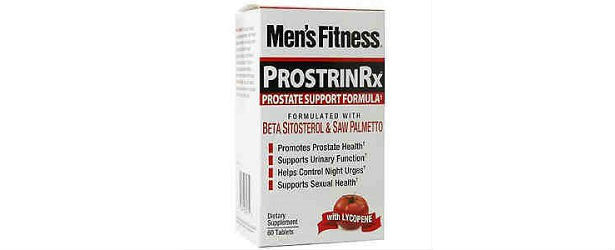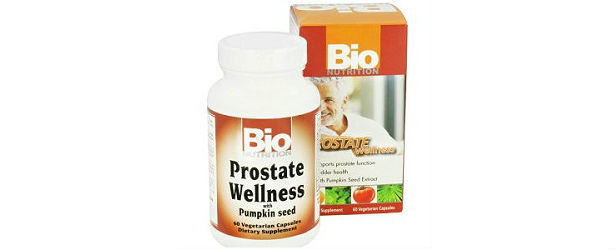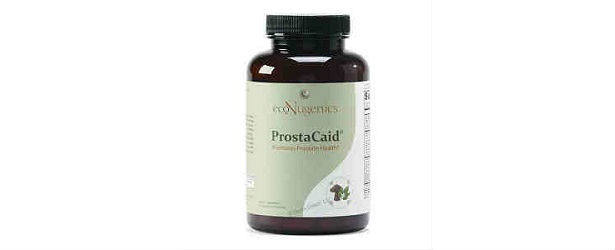Treatments & Solutions for Prostates
The solutions and treatments for enlarged prostates vary. These depend on the extent of the prostate problem, and its physiological effect also plays a big role in determining the right solution. There are in fact a good number of treatments available to resolve the problem — the most basic among them is to carefully watch for some possible symptoms, modify the lifestyle to something that will favor the overall condition of the prostate, and taking prescribed drugs, or going for the surgical or proven medical procedure.
Those people in their 60s and up are prone to developing prostate problems. The bothersome part is that most of the people who already have enlarged prostate, mostly men, do not feel or see any symptoms. If diagnosed in an early stage, the individuals can just make some changes with their diet and lifestyle in order to minimize the effects or even resolve the prostate enlargement.
On the other hand, if the enlargement of prostate has been classified and diagnosed as BPH, consult a medical specialist or a doctor to prevent the condition from getting worse. Early diagnosis is always better because the options in resolving the prostate enlargement will not be limited.
Some Lifestyle Change for Early Stage or Mild Symptoms
 Do not control urination. If your body feels like urinating, comply and do not delay the process. Also, urinating even if you do not feel like doing so helps.
Do not control urination. If your body feels like urinating, comply and do not delay the process. Also, urinating even if you do not feel like doing so helps.- As much as possible, minimize or better yet avoid caffeinated drinks or beverages especially before bedtime.
- Drink plenty of water the whole day (during day time) and do not drink any fluid before bedtime.
- Avoid taking medications that have antihistamine or decongestant as their active ingredients. These substances greatly contribute to worsening the prostate condition.
- Get some exercise. No extravagant of exercising is necessary; simple walking and running will do just fine.
- Keep your body comfortably warm all the time if possible.
- Reinforce or strengthen the vital body parts such as the pelvic area. This can be achieved by doing Kegal exercises.
- Avoid stress or simply minimize stress if it is something you cannot eliminate due to work or other daily factors.
On Medications
- Medications formulated to resolve hypertension may also help minimize the effects, or even actual prostate enlargement and other problems. These start by relaxing the prostate and muscle groups in the bladder and are all possible with the help of Alpha 1-blockers like Alfuzosin, Doxazosin, Praxozin, Tamsulosin, and Terazosin.
- Most of the time doctors prescribe dutasteride and finasteride in order to minimize the hormone production of the prostate, make urination easy, and minimize the symptoms of BPH. Don’t expect an immediate result from the medication, and it may even take up to six good months before these positive effects appear. The downsides of these substances are diminished sexual drive and even impotency.
- In cases of chronic prostasis, also known as inflammation of the prostate, prescribed antibiotics will lessen the inflammation and minimize some possible infections.
- Saw Palmetto is a natural remedy or a medication often suggested to resolve or treat BPH in replacement of the synthetic treatments. Most men who have already tested or tried it say that it works, but some medical experts still question this fact. If you have tried using saw palmetto and observe favorable improvements, talk to a doctor to verify and confirm its safety and effectiveness.
On Surgical Remedies
Surgical procedures are only suggested to patients who are suffering from the following symptoms:
- Blood presence in the urine
- Bladder stones
- Chronic or repetitive Urinary Tract Infection (UTI)
- Decrease in kidney function
- Urinary retention
- Incontinence
The surgical procedure recommendation depends on the extent of the prostate problem or how enlarged the prostate is. Known surgical procedures for prostate enlargement include the following:
Transurethral Incision (TUIP)
 This surgical procedure is administered to those patients who have lesser prostate enlargement conditions, though it is similar to Transurethral Resection of the Prostate or TURP.
This surgical procedure is administered to those patients who have lesser prostate enlargement conditions, though it is similar to Transurethral Resection of the Prostate or TURP.
The process involves initiating a non-harmful cut to the prostate that enlarges the passage leading to the bladder and urethra. The process does not remove anything in the prostate. It is also considered an outpatient procedure depending on the physical condition of the patient.
Transurethral Resection of the Prostate (TURP)
This surgical procedure is more invasive compared to TUIP. The scope is inserted to the urethra in order to remove some parts from the prostate. This is the most used method in treating BPH.
Simple Prostatectomy
From the word “ectomy”, which means removal of a certain body part, this surgical procedure is considered an inpatient procedure. This ensures proper management before and after the surgery. The patient is required to stay in the hospital from seven to ten long days.
The procedure is performed by removing parts of the prostate through an incision on the stomach near the scrotum area. This is normally done with spinal or general anesthesia.
Patients who have undergone these procedures mentioned that their urination and overall physical condition improved.
Minor Surgical Procedures
Some patients are not willing to go through invasive surgical procedures. Depending on their prostate condition, some minor surgical procedures may provide relief as well. These procedures use heat technology to immobilize or eliminate some tissues in the prostate. They include:
- Interstitial laser Coagulation (ILC / HoLEP – Holmium Laser uses beams or lasers in order to create heat that will kill the tissues in the prostate.
- Transurethral Electrovapurazation (TUVP) kills the prostate tissues by heat coming from the electric current.
- Transurethral Microwave Thermotherapy (TUMT) initiates heat through microwaves.
- Transurethral Needle Ablation (TUNA) uses radio waves to create heat that kills or eliminates some tissues in the prostate.
- Water-Induced Thermotherapy (WIT) uses hot or warm water to kill the prostate tissues.
 These procedures have proven effective in the field of medicine already but Transurethral Resection of the Prostate (TURP) tops the list as the most recommended and proven method for treating prostate conditions. Those patients who have undergone minor surgical procedures for the prostate had a higher chance of repeating the same surgical procedure at least five or ten years later.
These procedures have proven effective in the field of medicine already but Transurethral Resection of the Prostate (TURP) tops the list as the most recommended and proven method for treating prostate conditions. Those patients who have undergone minor surgical procedures for the prostate had a higher chance of repeating the same surgical procedure at least five or ten years later.
Nevertheless, the minor surgical procedures can be helpful for: patients of younger age, patients who are already too old to undergo invasive surgeries, and patients who have preexisting medical conditions (like addiction to alcohol, cirrhosis, diabetes, heart health problems, lung problems, and kidney problems. Finally, the minor procedures can be helpful with people who are on medication that weakens or thins the blood.
Science and Technology have never stopped in creating and providing options for patients, and the “robot guided prostatectomy” is just one of these tested surgical procedures. With all this, the fact remains that the Robot-Guided Prostatectomy is well beyond all other established medical or surgical producers.
Apparently, these procedures have not gotten any feedback as to their effectiveness and safety so that they can be on the market.

 Subscribe Now
Subscribe Now











